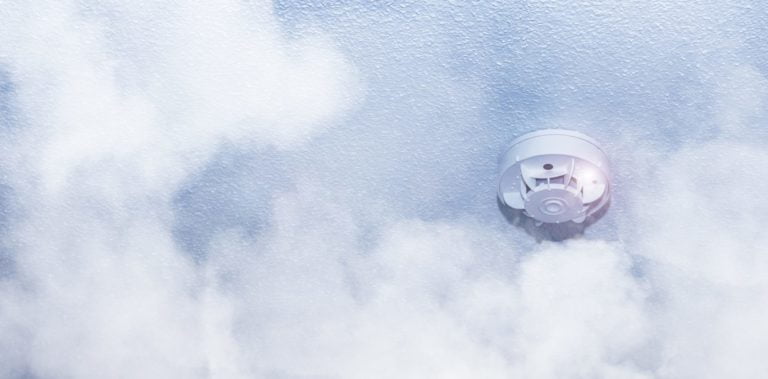Vaping is becoming an increasing problem in schools. Vaping is the act of inhaling and exhaling the vapor created by an electronic cigarette or other vaping devices. The aerosol contains nicotine, flavors, and other chemicals.
Students’ use of vaping products has increased dramatically in recent years, prompting concerns among educators and public health officials about the potential health risks to young people. A recent study by the Centers for Disease Control and Prevention (CDC) found that the use of vaping products by high school students increased by 78 percent from 2017 to 2018.
As the vaping epidemic continues to grow, schools are taking action by installing vape detectors. Today, we’ll examine school vape detectors and how schools use them to combat the vaping epidemic.
What is a vape detector?

Vape detectors are becoming a popular choice for schools because they overcome the previous challenges surrounding students vaping. One of the most significant challenges for schools is that the devices used for vaping can be quite small and easily hidden, making it difficult for educators to know when students are vaping. Additionally, the vapor doesn’t smell the same as the smoke from cigarettes, so it can be hard for people in the vicinity to know when someone is vaping.
Many schools use vape detectors to combat the growing problem of teen vaping in schools. Vape detectors can identify the presence of chemicals like nicotine, propylene glycol, and glycerol in the environment. This way, despite the subtle odor and how quickly vapor dissipates, schools can still detect the presence of this vapor.
How do vape detectors work?

As we mentioned, these detectors measure the chemicals present in the air to determine the presence of vapor. The vape detector measures against a range of different onboard sensors to identify the likelihood of vaping or smoking occurring on its Vape Index, which displays the likelihood of vaping occurring on a scale of 1 to 100. When the Vape Index reaches a certain level, administrators can receive real-time alerts via SMS and email. This allows teams to quickly respond to any vaping or smoking incidents. Furthermore, the vape detector can notify pre-selected faculty members and on-campus security of any potential vaping or smoking incidents. This allows for a coordinated response and increased safety for all students.
Most schools now install vape detectors in combination with cameras. This way, not only can the school detect the presence of vaping, but they can also identify who was doing the vaping. This is an important step, as schools can take disciplinary action against students caught vaping.
Additionally, schools frequently use the information from the vape detectors to educate students about the dangers of vaping. This information can help students make better decisions about their health and wellbeing.
What else can schools do to combat the vaping epidemic?

Vaping is a dangerous habit, and it can be addictive. It can also lead to health problems, including lung cancer. Young people are particularly vulnerable to these health problems, and schools need to take action to protect them. They can do this by implementing policies prohibiting vaping on school grounds and educating students about teen vaping.
Parents can also help keep their children safe from the dangers of teen vaping. Parents can talk to their children about the dangers of vaping and set rules prohibiting vaping in the home. By working together, schools and parents can help keep young people safe from these dangers.
Keep your school safe with vape detectors.
The vaping epidemic may be affecting many of today’s young people. However, schools have an effective tool to combat this problem in the form of vape detectors. So, consider implementing this solution to fight back against this epidemic in your school system.







